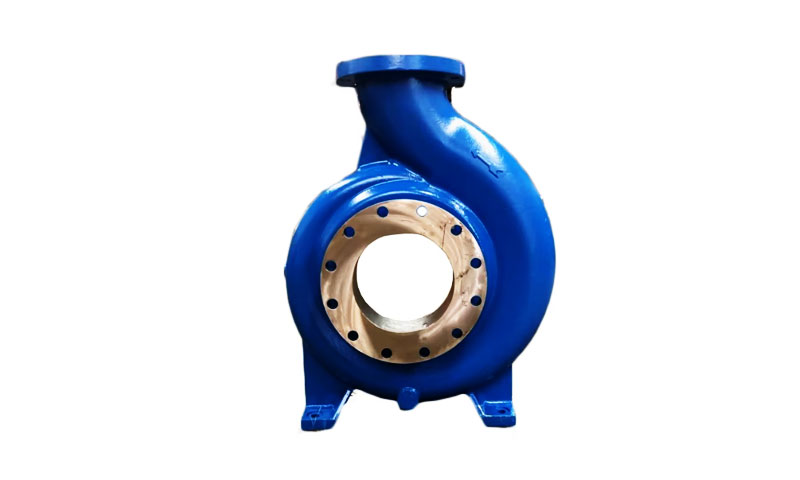1. Вступ
Pump bodies are structural and hydraulic housings that convert driver energy into fluid motion. They commonly contain volutes, impeller seats, bearing bosses, flanges and internal passages.
The manufacturing route chosen for a pump body sets achievable geometry, металургія, cost and lead time.
Investment casting stands out where geometry is complex (internal guide vanes, thin webs, integrated bosses), tolerances are tight, and high-integrity alloys (Нержавіючі сталі, нікелеві сплави, бронзи) потрібні.
2. What Is an Investment Casting Pump Body?
Definition and core functionality
АН інвестиційне кастинг pump body is a pump housing produced by the lost-wax (інвестиції) casting method.
A wax (або полімер) pattern of the pump body is created, coated in refractory ceramic to build a shell, the wax removed by heating, and molten metal poured into the ceramic mold.
The fired shell is broken away after solidification to reveal a near-net cast pump body that is subsequently finished and inspected.
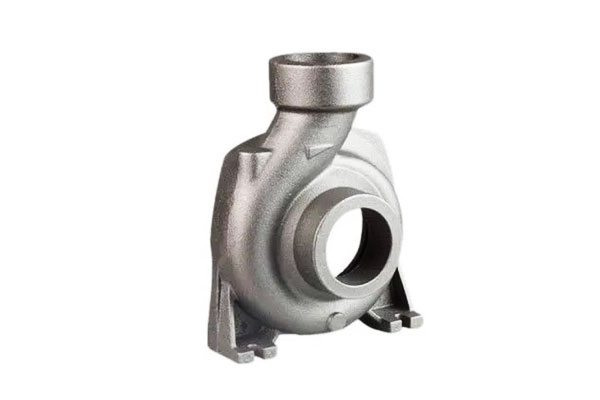
Typical specifications and dimensions
- Part mass: investment cast pump bodies usually range from a few hundred grams to tens of kilograms per piece; many foundries routinely cast pump bodies from ~0.5 kg up to ~50–100 kg depending on plant capability.
- Товщина стіни: typical nominal walls for stainless or nickel alloys: 3–12 мм; minimum thin sections down to 1–2 мм are achievable in selected alloys and process control.
- Розмірна толерантність (неухильний): general investment cast tolerances commonly fall in ± 0,1–0,5 мм for small features; percent-based tolerance of ±0.25–0.5% linear is a practical rule of thumb.
Critical machined features are usually left with machining allowance (0.2–2.0 mm depending on casting accuracy). - Поверхнева обробка (неухильний): typical Ra 1.6–3,2 мкм (50–125 хв) for standard ceramic shells; fine shells and careful pouring can produce Ra ≈ 0.8–1.6 μm.
Sealing faces or bearing journals are machined/lapped to much finer Ra (≤ 0.2 мкм) as required.
3. Дизайнерські міркування
Investment casting enables complex geometry, but good design practice maximizes quality and minimizes cost.
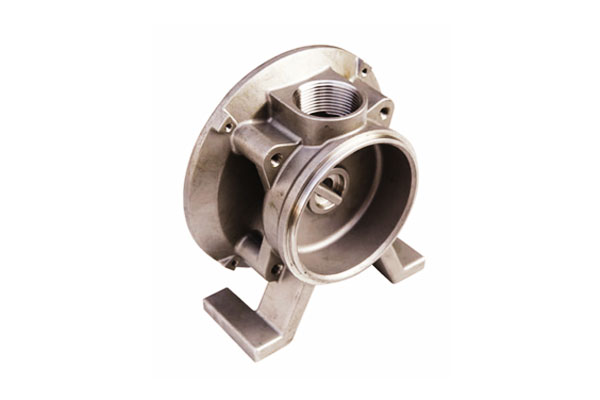
Hydraulic performance requirements
- Flow passages & volutes: smooth fillets and controlled convergence avoid separation and cavitation.
Internal fillet radii should be generous (≥ 1–2× wall thickness) to reduce turbulence. - Impeller seat alignment: concentricity and perpendicularity are critical — plan for machined bores and datum features.
- Clearances: pump clearances at impeller overhangs and seal faces must be maintainable by post-cast machining.
Structural requirements
- Stress & втома: consider cyclical loads; use finite-element analysis to identify local stress risers.
Cast metallurgy (розмір зерна, сегрегація) affects fatigue life—design to avoid thin, highly stressed bosses without proper filleting. - Vibration: stiff webs and ribs help raise natural frequencies; investment casting allows ribs to be integrated into the body.
Корозія & носити
- Вибір матеріалу: choose alloy based on fluid chemistry (рН, хлориди, ерозійні частинки, температура).
For seawater, duplex or cupronickel may be required; for acids, Hastelloy or appropriate nickel alloys. - Erosion resistance: smooth internal surfaces and sacrificial coatings (твердий, тепловий бризок) are options where particulate slurry is present.
Розмірні допуски & поверхнева обробка
- Критичні особливості: designate which faces/bores are finish-machined and specify machining allowances (Напр., 0.5–1.5 mm for sandier shells, 0.2–0.6 mm for precision shells).
- Sealing surfaces: specify Ra and flatness; often lapped/polished to Ra ≤ 0.2 μm and flatness within 0.01–0,05 мм depending on pressure class.
4. Materials for Investment Casting Pump Bodies
Material selection is a critical factor in designing and producing investment-cast pump bodies, as it directly affects mechanical performance, Корозійна стійкість, виробництво, і службове життя.
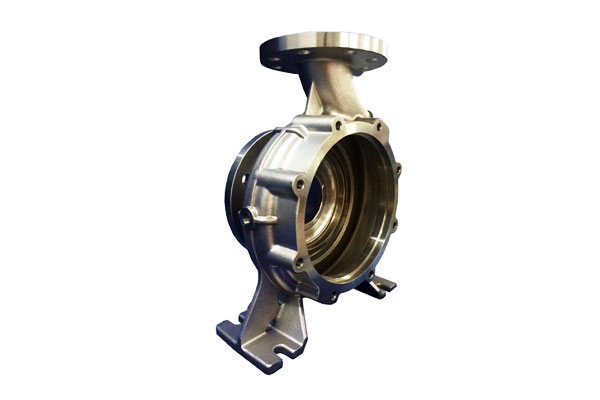
| Матеріальна категорія | Приклад сплавів | Ключові властивості | Типові програми | Кастинг міркувань |
| Аустенітний Нержавіюча сталь | 304, 316Л | Відмінна резистентність до корозії, помірна сила, Хороша зварюваність; Розтяг: 480–620 МПа, Похід: 170–300 МПа, Подовження: 40–60% | General chemical pumps, очищення води, їжа & напій | Good molten fluidity, low hot-cracking risk, easy post-machining |
| Дуплексна нержавіюча сталь | 2205, 2507 | Висока сила (Yield 450–550 MPa), superior chloride stress corrosion resistance | Marine and offshore pumps, aggressive chemical environments | Requires controlled temperature; post-casting heat treatment to prevent sigma phase |
Нікелеві сплави |
Юнель 625, 718; Хастеллой | Виняткова резистентність до корозії, Сила високої температури, Окислювальна стійкість | Хімічна обробка, Генерація живлення, нафта & газовий | High melting points (≈1450–1600 °C); careful mold preheating and controlled pouring needed; difficult machining |
| Бронза and Copper Alloys | C93200, C95400 | Відмінна резистентність до морської води, Хороший зносостійкість, antifouling; нижня механічна міцність | Морські насоси, Охолодження морської води, гідравлічні компоненти | Lower melting points (≈1050–1150 °C) simplify casting; low thermal cracking risk; mechanical strength lower than stainless/nickel |
5. Investment Casting Process for Pump Bodies
Лиття по моделлю, також відомий як Кастинг загубленого воску, enables the production of pump bodies with complex geometries, тонкі стіни, і висока розмірна точність.
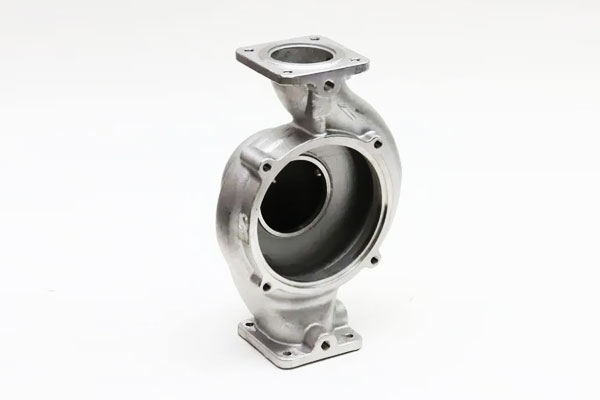
The process consists of several critical steps:
| Крок | опис | Ключові міркування |
| 1. Створення воску | Molten wax is injected into precision molds to form replicas of the pump body. | Ensure uniform wall thickness; maintain dimensional accuracy ±0.1 mm; use high-quality wax to prevent distortion. |
| 2. Assembly of Wax Tree | Individual wax patterns are attached to a central wax sprue to form a tree for batch casting. | Sprue design affects metal flow; minimize turbulence during pouring. |
| 3. Будівля керамічної оболонки | Repeated dipping in ceramic slurry and stuccoing with fine refractory sand creates a strong, Теплостійка оболонка. | Target shell thickness (5–10 мм) depends on pump body size; avoid cracks and porosity in the shell. |
| 4. Dewaxing and Mold Firing | Wax is melted out (autoclave or kiln), Залишаючи порожнину; the ceramic shell is then fired to remove residues and strengthen the mold. | Temperature ramping must be controlled to prevent shell cracking; residual wax must be fully removed. |
5. Металевий |
Розплавлений метал (нержавіюча сталь, nickel alloy, або бронза) is poured into the preheated ceramic mold under gravity or vacuum-assisted conditions. | Pouring temperature and rate must ensure complete filling; control turbulence and prevent oxide formation. |
| 6. Затвердіння та охолодження | Metal solidifies inside the mold; cooling rates affect microstructure, механічні властивості, і залишковий стрес. | Thick sections may require controlled cooling to prevent porosity; thin walls must avoid hot tearing. |
| 7. Видалення оболонки | Ceramic shell is broken away mechanically, often using vibration, sand blasting, or chemical dissolution. | Avoid damaging intricate pump channels or flanges. |
| 8. Finishing and Cleaning | Residual ceramic, gating system, and surface imperfections are removed via grinding, вибух, or chemical cleaning. | Maintain dimensional tolerances; prepare surfaces for subsequent machining or coating. |
6. Операції після відсічення
After the pump body is removed from the ceramic shell, several post-casting operations are performed to ensure the component meets functional, розмірний, та вимоги до якості поверхні.
These operations are critical for high-performance applications in chemical, морський, та промислові сектори.
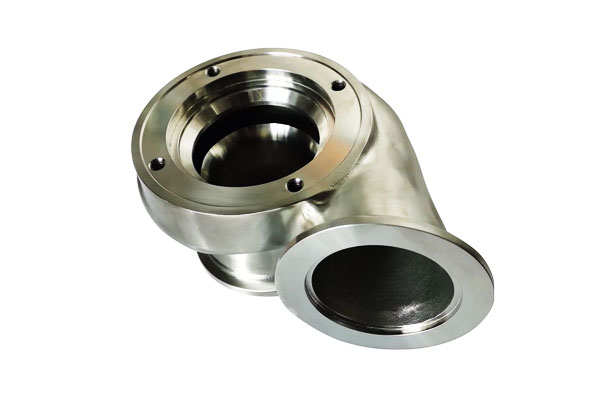
Термічна обробка
Термічна обробка is applied to relieve residual stresses, Поліпшення пластичності, and optimize mechanical properties:
- Зниження стресу: Heating to 550–650 °C for stainless steels reduces residual stress from casting and prevents distortion during machining.
- Розведення розчину: Applied for stainless steels and nickel alloys to homogenize microstructure and dissolve unwanted precipitates, ensuring corrosion resistance and consistent hardness.
- Aging or Precipitation Hardening (for certain alloys): Enhances strength and wear resistance in high-performance materials.
Обробка
Critical dimensions such as flanges, свердловина, mating surfaces, and threaded ports are machined to meet tight tolerances.
Typical machining operations include turning, фрезер, свердління, and boring. Machining ensures:
- Dimensional tolerances of ±0.05–0.1 mm for precise assembly.
- Smooth sealing surfaces to prevent leaks in high-pressure applications.
Поверхнева обробка
Поверхнева обробка Підвищує резистентність до корозії, Опір зносу, і естетика:
- Полірування: Improves smoothness for sealing faces and internal channels.
- Вибух: Removes residual ceramic particles and creates a uniform surface for coating or painting.
- Покриття: Optional chemical or electroplated coatings (Напр., нікель, PTFE) enhance corrosion resistance and reduce friction.
Неруйнівне тестування (NDT)
To detect defects such as porosity, тріщина, or inclusions, NDT is performed:
- Рентгенографія (Рентгенівський): Identifies internal voids and inclusions.
- Ультразвукове тестування (ЮТ): Detects subsurface flaws in thick sections.
- Тестування проникнення барвника (Pt): Reveals surface cracks and porosity.
Cleaning and Inspection
Нарешті, pump bodies are cleaned to remove residual machining oils, Сміття, or salts. Dimensional and visual inspections verify compliance with specifications before assembly or shipment.
7. Quality Assurance and Testing
Забезпечення якості (QA) is critical in ensuring that investment casting pump bodies meet design specifications, performance standards, та потреби в галузі.
A systematic QA approach combines dimensional checks, механічне випробування, and non-destructive evaluation to detect defects and confirm functional integrity.
Розмірний огляд
Dimensional verification ensures that the pump body conforms to design drawings and tolerances:
- Координація вимірювальних машин (CMM): Measure complex geometries, свердловина, фланці, and mounting surfaces with accuracy of ±0.01–0.05 mm.
- Gauge Tools: Thread gauges, plug gauges, and height gauges verify critical features quickly in production.
- Вимірювання шорсткості поверхні: Confirms finishing requirements for sealing faces and internal channels (Напр., Ra ≤0.8 μm for hydraulic components).
Mechanical Property Verification
Mechanical testing validates that the material meets required strength, пластичність, і твердість:
- Тестування на розтяг: Measures yield strength, ultimate tensile strength, і подовження, ensuring the material can withstand operational loads.
- Тестування твердості: Rockwell or Vickers testing confirms that heat treatment and material processing achieved the desired hardness.
- Тестування впливу (якщо потрібно): Evaluates toughness for applications exposed to fluctuating loads or shock.
Неруйнівне тестування (NDT)
NDT techniques detect hidden defects without damaging the part:
- Рентгенографія (X-ray/CT Scanning): Identifies internal porosity, включення, and voids, particularly in thick sections.
- Ультразвукове тестування (ЮТ): Detects internal cracks, порожнечі, or delaminations in dense materials like stainless steel and nickel alloys.
- Тестування проникнення барвника (Pt): Reveals surface cracks, горілки, or fine porosity not visible to the naked eye.
- Тестування магнітних частинок (Mt): Applied for ferromagnetic alloys to detect surface and near-surface discontinuities.
Common Casting Defects and Mitigation Strategies
- Пористість: Minimized through proper gating, вентиляція, and controlled solidification rates.
- Порожнини усадки: Addressed via riser design and thermal management.
- Холод закривається і неправильно: Avoided by maintaining optimal pouring temperatures and smooth flow in complex geometries.
- Surface Inclusions: Controlled by using high-purity alloys and proper degassing techniques.
8. Advantages of Investment Casting for Pump Bodies
- Складна геометрія: Внутрішні уривки, thin walls and integrated bosses with minimal secondary assembly.
- Близька форма: reduces material removal vs. rough machining from bar or billet — often 30–70% less machining для складних частин.
- Висока розмірна точність & поверхнева обробка: less secondary finishing for many features compared with sand casting.
- Alloy flexibility: cast many stainless and nickel alloys with good metallurgical integrity.
- Small to medium production flexibility: tooling for wax patterns is relatively inexpensive vs. large die tooling, enabling economic runs from prototypes to thousands of parts.
9. Обмеження та виклики
- Cost for very large parts: above certain sizes (часто >100 кг) investment casting becomes uneconomical compared with sand casting or fabricating/ welding.
- Час: pattern tooling, shell building and firing add lead time—prototype timelines usually measured in weeks.
- Porosity risk in thick sections: thick bosses or large cross-sections require careful gating, chills or segmenting to avoid shrinkage.
- Surface finish and tolerances depend on shell system: achieving ultra-fine finishes or extremely tight as-cast tolerances requires premium ceramic systems and process control.
10. Промислові програми
Investment casting pump bodies are used across a broad spectrum of industries due to their complex geometry capabilities, Матеріальна універсальність, і висока розмірна точність.
The process allows engineers to design optimized hydraulic passages, тонкі стіни, and integrated mounting features that improve pump efficiency and longevity.
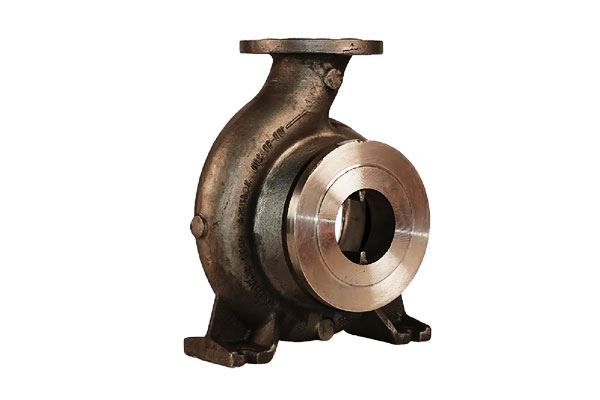
Chemical Processing Pumps
- Навколишнє середовище: Corrosive fluids such as acids, caustics, і розчинники.
- Materials Used: Нержавіючі сталі (316Л, дуплекс) and nickel alloys (Хастеллой, Юнель).
- Обґрунтування: Investment casting enables intricate internal channels, minimizing turbulence and ensuring uniform flow, critical for chemical process reliability.
Water and Wastewater Pumps
- Навколишнє середовище: High-volume pumping, abrasive suspended solids, and variable pH levels.
- Materials Used: Бронза, Дуплексна нержавіюча сталь, and corrosion-resistant cast irons.
- Обґрунтування: Thin-wall, smooth internal passages reduce clogging and energy losses, improving efficiency in municipal and industrial water systems.
Marine and Offshore Pumps
- Навколишнє середовище: Saltwater exposure, high-pressure operation, and cyclical mechanical stress.
- Materials Used: Мідні сплави (морська латунь, бронза), Дуплексні нержавієві сталі.
- Обґрунтування: Resistance to corrosion and biofouling is critical; investment casting allows seamless, complex geometries to reduce maintenance and improve service life.
Нафта & Gas and Power Generation Pumps
- Навколишнє середовище: Високотемпература, high-pressure fluids, and hydrocarbon-based media.
- Materials Used: High-nickel alloys (Юнель, Хастеллой), нержавіюча сталь, and cobalt-based alloys.
- Обґрунтування: Investment casting supports high-strength materials and precise tolerances necessary for critical applications such as turbine lubrication, chemical injection, and offshore drilling.
Specialty and Custom Pumps
- Навколишнє середовище: Laboratory, фармацевтичний, or food processing applications requiring hygienic and precision performance.
- Materials Used: Нержавіюча сталь (304, 316Л), титан, або нікелеві сплави.
- Обґрунтування: Гладкі поверхні, Тісні допуски, and complex geometries achieved by investment casting ensure minimal contamination risk and compliance with regulatory standards.
11. Порівняльний аналіз
| Означати / Критерії | Інвестиційне кастинг | Пісочний кастинг | Machining from Solid |
| Геометрична складність | Excellent – thin walls, внутрішні канали, intricate features achievable | Moderate – limited by core placement and mold stability | Limited – complex internal geometries often impossible without assembly |
| Розмірна точність | High – ±0.1–0.25 mm typical | Moderate – ±0.5–1.0 mm | Very High – ±0.05 mm achievable |
| Поверхнева обробка (Рак) | Fine – 1.6–3.2 μm typical; can be polished | Rough – 6–12 μm; requires machining for precision | Excellent – 0.8–1.6 μm achievable with finishing |
| Параметри матеріалу | Wide – stainless steels, нікелеві сплави, бронза, мідні сплави | Wide – iron, сталь, бронза, алюміній | Wide – depends on machinable stock availability |
| Розмір партії | Low-to-medium – 1–1000+ parts | Medium-to-high – economical for large, прості частини | Low – material waste increases cost for large parts |
| Час | Moderate – wax pattern & shell building required | Short-to-moderate – mold preparation relatively quick | Variable – depends on machining complexity |
Матеріальні відходи |
Low – near-net shape reduces scrap | Moderate – gating and risers generate some waste | High – subtractive process creates chips and offcuts |
| Вартість за частину | Moderate-to-high – tooling and process steps increase cost, economical for complex parts | Low-to-moderate – simpler molds, larger parts cheaper | High – extensive machining on large, complex parts is expensive |
| Міцність & Цілісність | Excellent – dense microstructure, minimal porosity if controlled | Moderate – risk of sand-related inclusions and porosity | Excellent – homogeneous, Ніяких дефектів кастингу |
| Post-Processing Required | Often minimal – some machining, закінчення | Usually significant – machining and finishing required | Minimal – final finishing for tight tolerances only |
| Типові програми | Pump bodies with thin walls, complex hydraulic channels, Корозійна стійкість | Великий, simple pump housings or structural components | Custom or prototype pump bodies requiring extreme precision |
12. Висновок
Investment casting pump body combines design freedom with metallurgical integrity, making them an excellent choice for many fluid-handling applications—especially where complex internal geometry, exotic alloys or tight tolerances are required.
Success depends on early design for casting, informed material selection, careful process control (заливання, shelling, термічна обробка), and robust QA/NDT programs.
For critical pump systems—marine, chemical or power generation—investment casting can deliver reliable, economical components when specified and executed correctly.
Поширені запитання
What maximum size of pump body can be investment cast?
Typical shop practice ranges up to ~50–100 kg per part, but the practical maximum depends on foundry capability and economics.
Very large pump bodies are more often produced by sand casting or fabricating/welding.
How much machining allowance should I design into an investment casting?
Дозволяти 0.2–2,0 мм depending on the criticality and shell precision. Specify tighter allowances only where the foundry guarantees precision shells.
Which material is best for seawater pump bodies?
Duplex stainless steels and selected copper-nickel alloys are common choices due to superior chloride pitting resistance and biofouling performance; final selection depends on temperature, velocity and erosion conditions.
What is the typical turnaround time for an investment-cast pump body?
Small production runs typically take 4–8 тижнів from pattern approval to finished parts; single prototypes can be faster with 3D-printed patterns but still require shell firing and melt schedules.
How do I specify acceptance criteria for porosity?
Use industry NDT standards (рентгенографія, КТ, ЮТ) and define acceptance levels in percent porosity by volume or via reference images.
Critical pressure-retaining pump bodies often require porosity <0.5% by volume and radiographic acceptance per customer standard.
